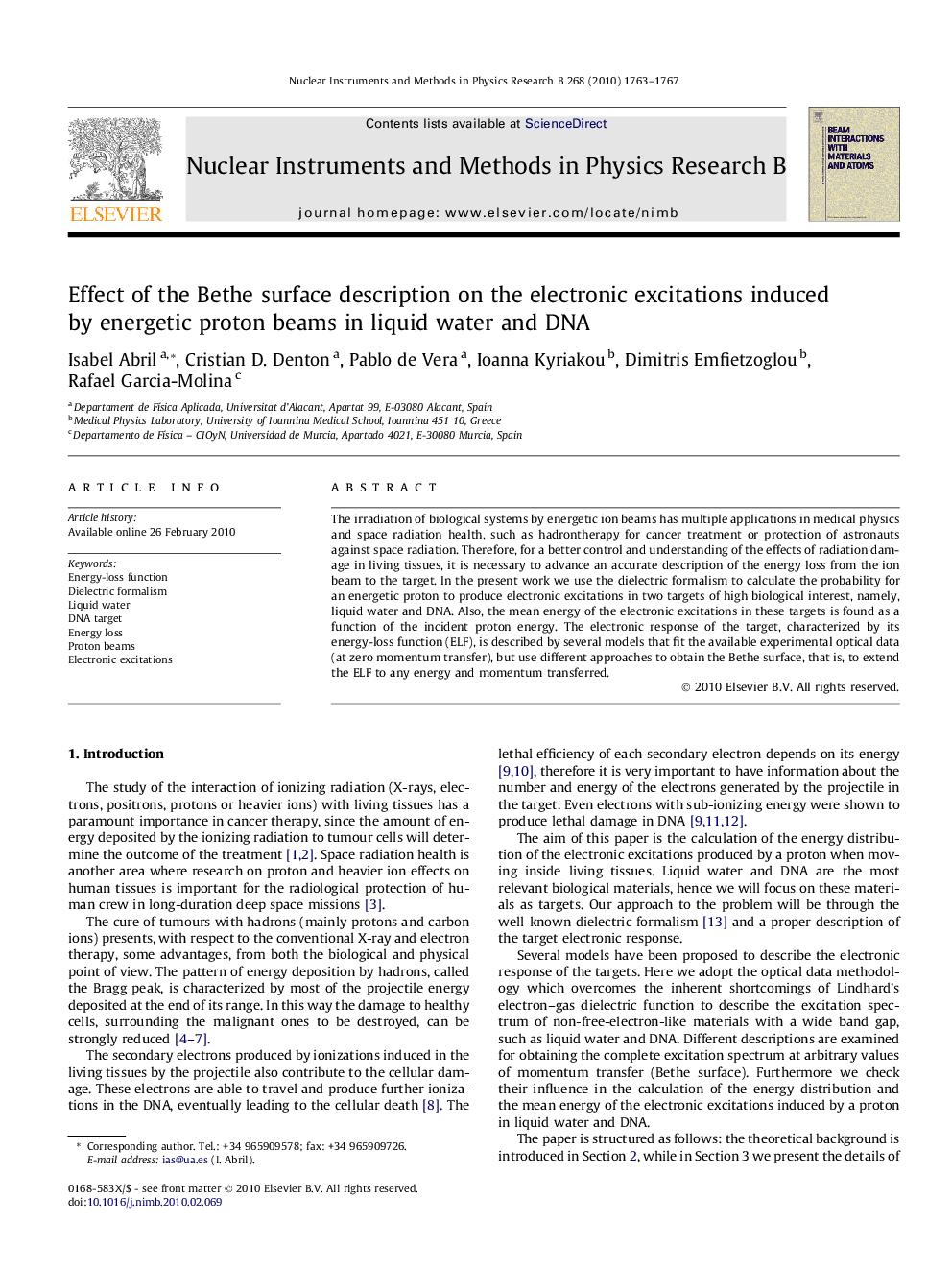| Article ID | Journal | Published Year | Pages | File Type |
|---|---|---|---|---|
| 1684213 | Nuclear Instruments and Methods in Physics Research Section B: Beam Interactions with Materials and Atoms | 2010 | 5 Pages |
Abstract
The irradiation of biological systems by energetic ion beams has multiple applications in medical physics and space radiation health, such as hadrontherapy for cancer treatment or protection of astronauts against space radiation. Therefore, for a better control and understanding of the effects of radiation damage in living tissues, it is necessary to advance an accurate description of the energy loss from the ion beam to the target. In the present work we use the dielectric formalism to calculate the probability for an energetic proton to produce electronic excitations in two targets of high biological interest, namely, liquid water and DNA. Also, the mean energy of the electronic excitations in these targets is found as a function of the incident proton energy. The electronic response of the target, characterized by its energy-loss function (ELF), is described by several models that fit the available experimental optical data (at zero momentum transfer), but use different approaches to obtain the Bethe surface, that is, to extend the ELF to any energy and momentum transferred.
Keywords
Related Topics
Physical Sciences and Engineering
Materials Science
Surfaces, Coatings and Films
Authors
Isabel Abril, Cristian D. Denton, Pablo de Vera, Ioanna Kyriakou, Dimitris Emfietzoglou, Rafael Garcia-Molina,
